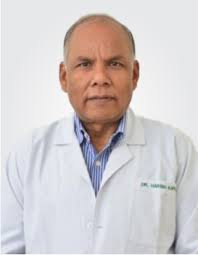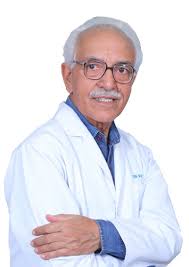What is Arthrodesis and when is it recommended?
Arthrodesis, also known as joint fusion surgery, is a procedure that fuses two bones at a joint, effectively eliminating motion in that joint. This is usually done to relieve chronic joint pain that cannot be managed through medications or other therapies. It is commonly recommended for patients with severe arthritis, joint instability, or deformities, especially when joint replacement is not an option.
By permanently joining the bones, arthrodesis stabilizes the joint and reduces pain caused by movement. This procedure is particularly beneficial when joints are too damaged or painful to function properly, especially in the spine, ankle, wrist, or fingers.
Which joints are most commonly fused?
Arthrodesis can be performed on various joints depending on the patient's condition and needs. The most common joints targeted include:
- Spine (cervical, thoracic, or lumbar vertebrae) – to relieve pain from disc degeneration or spinal instability.
- Ankle joint – for severe arthritis or deformities.
- Wrist and finger joints – for advanced rheumatoid arthritis.
- Hip or knee (rare cases) – when joint replacement isn't viable.
The selection of the joint depends on the severity of the damage, the underlying disease, and the patient's overall health and mobility goals.
How does joint fusion surgery work?
In arthrodesis, the surgeon removes the cartilage from the ends of the bones in the affected joint. Once the cartilage is removed, the bones are positioned to allow them to heal and fuse naturally over time. Metal plates, rods, screws, or bone grafts may be used to hold the bones in place and support fusion.
Over several weeks or months, the bones grow together, creating a single, solid bone. This eliminates movement and, consequently, the pain caused by joint motion. The surgical technique may vary depending on the location of the joint and the degree of damage.
What pre-operative steps are involved?
Preparation for arthrodesis involves several important steps to ensure safety and optimal outcomes:
- Clinical evaluation: A thorough review of your medical history and physical examination.
- Imaging tests: X-rays, MRI, or CT scans help assess the joint structure.
- Blood tests: To evaluate general health and detect any underlying issues.
- Anesthesia clearance: To ensure you're fit for general or regional anesthesia.
- Medication review: Certain medications may need to be paused before surgery.
- Patient counseling: Discussion on recovery expectations, rehabilitation, and lifestyle adjustments.
Proper preparation reduces the risk of complications and allows for a smoother surgical experience.
What is the surgical procedure for arthrodesis in India?
The arthrodesis surgery in India typically follows these steps:
- Anesthesia: Administered to ensure patient comfort.
- Incision and exposure: A precise incision is made to access the affected joint.
- Cartilage removal: Damaged cartilage is carefully removed to prepare bone surfaces.
- Positioning: Bones are aligned in a functional position suitable for fusion.
- Stabilization: Metal implants (plates, screws, rods) or bone grafts are placed to keep the bones together.
- Closure: The incision is sutured, and a dressing is applied.
- Immobilization: A splint, brace, or cast may be used to restrict movement and support healing.
The duration of surgery varies depending on the joint involved, ranging from 1 to 4 hours. In India, the procedure is conducted by skilled orthopedic surgeons using advanced tools and technology to ensure successful outcomes for international patients.
What is the cost breakdown by treatment component?
Here’s an estimated cost breakdown for arthrodesis surgery in India:
|
Treatment Component |
Estimated Cost (USD) |
|
Consultation & Diagnostics |
200 – 400 |
|
Pre-operative Tests |
150 – 300 |
|
Surgical Procedure |
1,200 – 1,800 |
|
Implants (screws, rods, grafts) |
500 – 800 |
|
Hospital Stay (3–5 days) |
300 – 600 |
|
Post-operative Care & Medications |
150 – 300 |
|
Total Estimated Cost |
2,500 – 3,500 |
These prices can vary depending on the city and the level of medical facility chosen
What recovery and rehabilitation are required after fusion surgery?
Recovery from arthrodesis can take several weeks to months, depending on the joint involved and the patient’s overall health. Initial healing may require:
- Immobilization: Casts, splints, or braces are used to keep the joint stable.
- Hospital Stay: Typically 3 to 5 days post-surgery.
- Pain Management: Medications to manage discomfort.
- Physiotherapy: Begins gradually to strengthen muscles and improve mobility.
- Weight-Bearing Restrictions: Especially for foot and spine fusions.
- Follow-Up Visits: To monitor healing via X-rays.
Full recovery may take 6–12 months, during which time the bone continues to fuse and strengthen. Compliance with rehab protocols ensures optimal outcomes.
Why should international patients choose India for this procedure?
India has emerged as a preferred destination for orthopedic surgeries like arthrodesis due to:
- Highly skilled orthopedic surgeons trained globally.
- Advanced hospital infrastructure meeting international standards.
- Affordable pricing that includes comprehensive care.
- No long waiting periods, enabling timely surgery.
- Multilingual staff and international patient desks.
International patients receive complete support from pre-arrival consultations to post-surgery rehabilitation, making India a trusted choice for joint fusion procedures.
Why is Healzone the ideal medical tourism partner for arthrodesis?
Healzone offers personalized and end-to-end assistance for international patients seeking arthrodesis surgery in India. Their services include:
- Medical consultations with top-rated orthopedic specialists.
- Visa and travel support, including flight booking assistance.
- Language support with interpreters for global patients.
- Cost transparency and tailored treatment packages.
- Post-discharge care coordination for rehabilitation and follow-up.
Their patient-centric approach ensures a smooth, stress-free experience from arrival to recovery.
What are the advantages of arthrodesis over joint replacement?
Arthrodesis is often chosen over joint replacement in specific scenarios. Key advantages include:
- Increased joint stability for severely damaged or deformed joints.
- Better longevity as there's no risk of prosthesis wear.
- Lower long-term complications in certain patient populations.
- Cost-effectiveness, especially for younger or highly active individuals.
While joint mobility is sacrificed, pain relief and improved function in daily activities make arthrodesis a viable and lasting solution.
Which surgical devices and implants are used?
Orthopedic surgeons utilize various implants and devices to secure bones during fusion. These include:
- Metal screws and plates for rigid fixation.
- Intramedullary rods inserted into the bone canal.
- External fixation devices in select cases.
- Autografts or allografts to stimulate bone growth.
The choice of implant depends on the joint involved, the patient’s anatomy, and the desired fusion outcome.
How should international patients prepare for surgery in India?
To prepare for arthrodesis surgery in India, international patients should:
- Consult with Healzone for case review and treatment planning.
- Organize medical records and imaging scans in advance.
- Apply for a medical visa with help from the medical coordinator.
- Prepare financially for the treatment and stay.
- Schedule sufficient time for surgery, hospital stay, and recovery.
- Follow pre-op instructions including fasting and medication adjustments.
A dedicated medical concierge team ensures all logistical aspects are handled smoothly.







